From the postcard-perfect Coral Bay to the hidden beauty of Secret Cove, these spots promise stunning photos and unforgettable views.
GVI
Posted: August 29, 2024

Lindsey Chynoweth
Posted: July 25, 2022
More than 35% of the world’s mangroves have disappeared, making mangrove forests one of the world’s most threatened ecosystems.
Compelling reasons to protect these habitats have surfaced in recent years as we begin to understand more about mangroves.
Once perceived as ‘swampy wastelands’, mangrove forests are now being lauded for some miraculous feats. From curing disease to buffering coastlines from extreme weather and fighting climate change, there is more to mangroves than meets the eye.
Here are seven facts about mangroves that might surprise you:
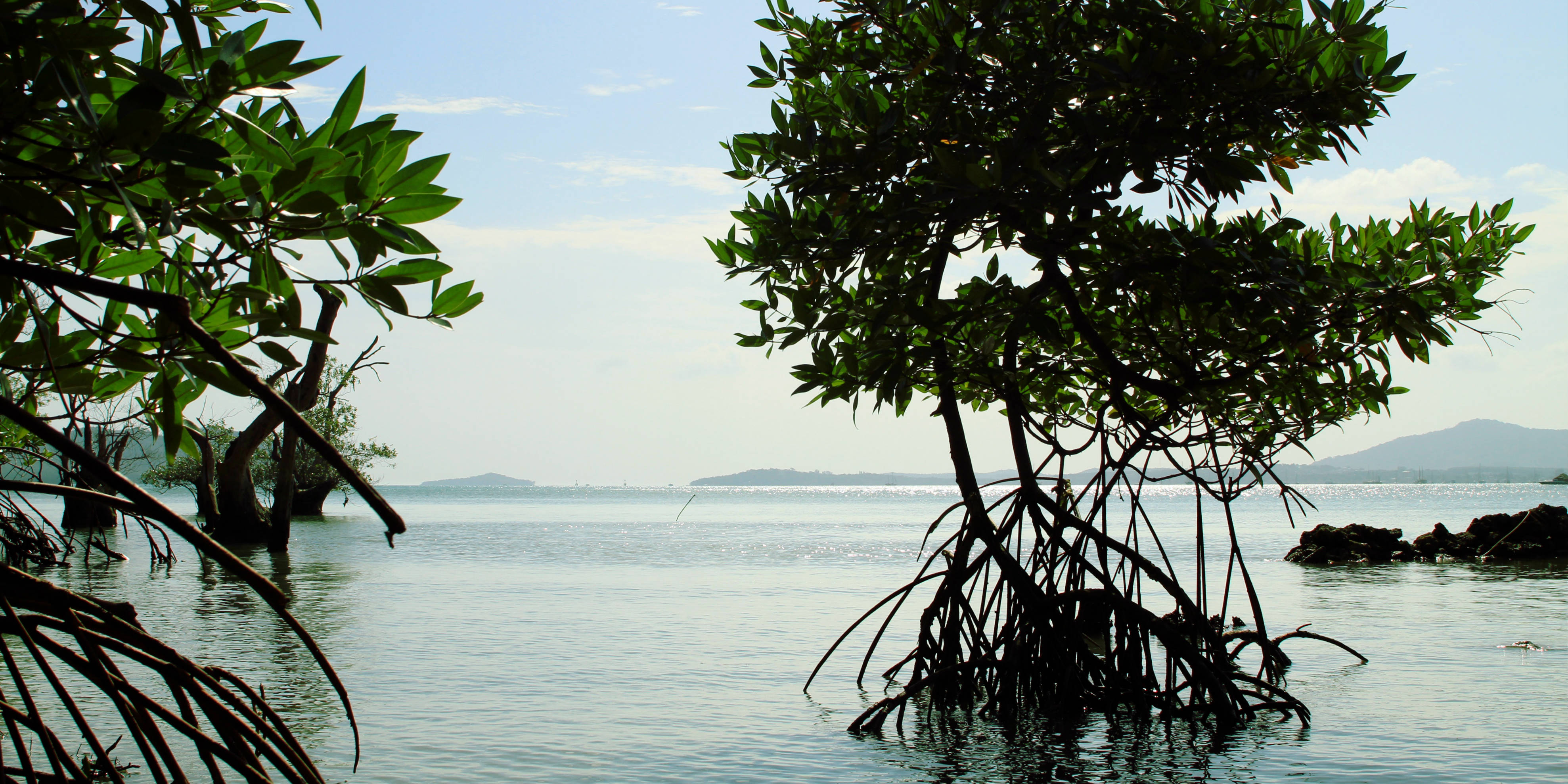
In 2004, an earthquake in the Indian Ocean triggered a catastrophic tsunami that battered shorelines across India and Southeast Asia. Although there was significant loss of life, with an estimated 227,000 people killed, scientists have since concluded that the tragedy would have been much worse if mangrove forests were absent.
The dense roots and branch networks of the mangroves acted as a buffer and slowed down the monstrous waves, some of which reached almost 100ft high. The damage in villages located behind mangroves was significantly reduced, and subsequent studies suggest that mangroves can reduce casualties in nearby settlements by 8%.
Over the past 15 years, community-based initiatives – such as the Green Coast Project – have encouraged the restoration of mangrove forests that were damaged in the 2004 tsunami in order to reinstate this natural barrier.
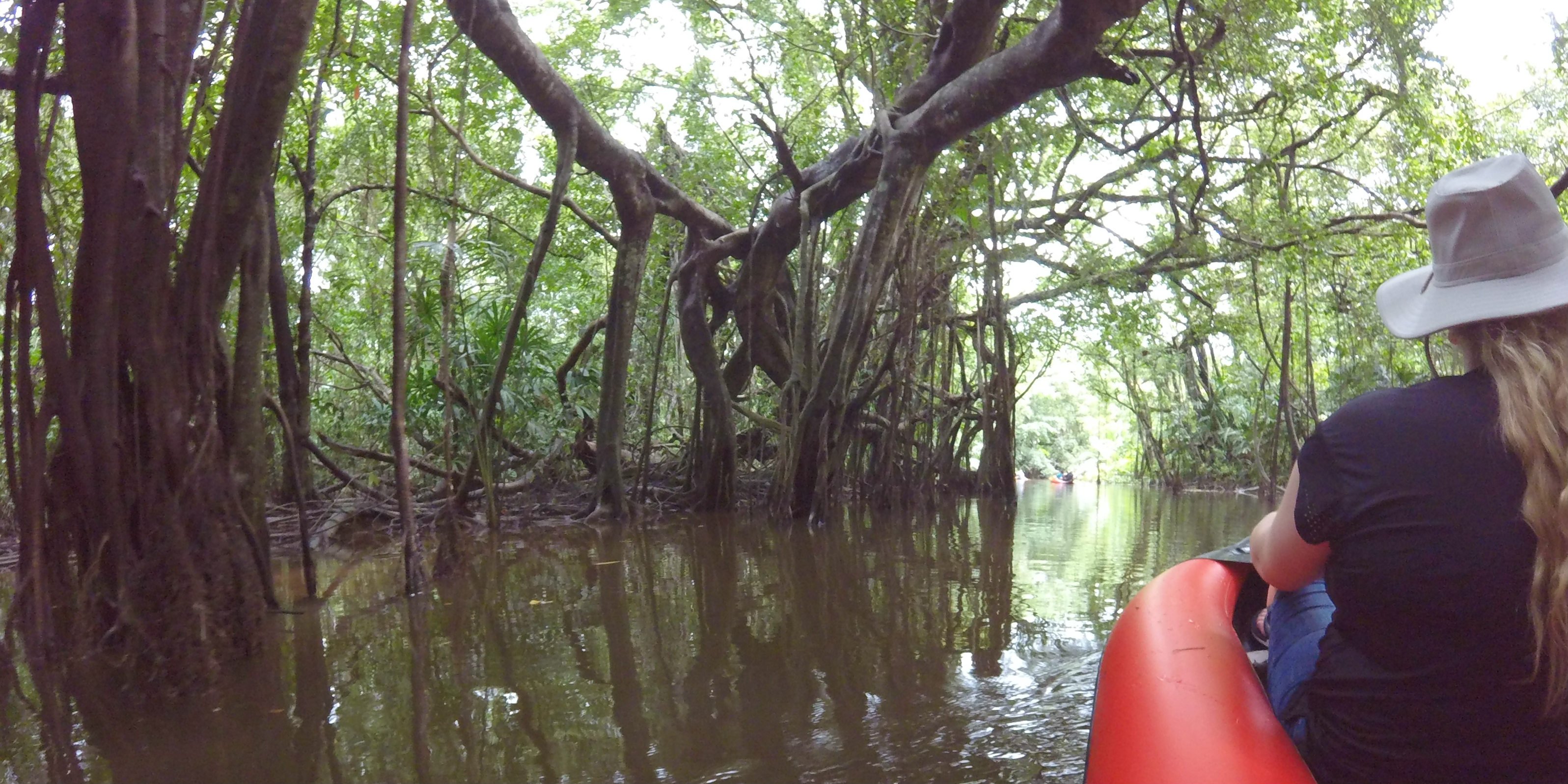
We all know that plants photosynthesise, using up carbon dioxide and emitting oxygen into the atmosphere in order to grow. Yet mangrove forests are specially adapted to storing carbon in soil and dead roots.
Due to their ability to absorb carbon, mangrove forests are known as ‘carbon sinks’ or ‘carbon-rich biomes’. By storing excess carbon, they help reduce global warming as there is less carbon dioxide trapped in the atmosphere. According to research, 14% of coastal carbon sequestration is thanks to mangrove forests.
By destroying mangroves to establish shrimp farms, a practice that has expanded exponentially in the past 30 years, a high volume of gas is released. The carbon that was safely stored away is unleashed into the air.
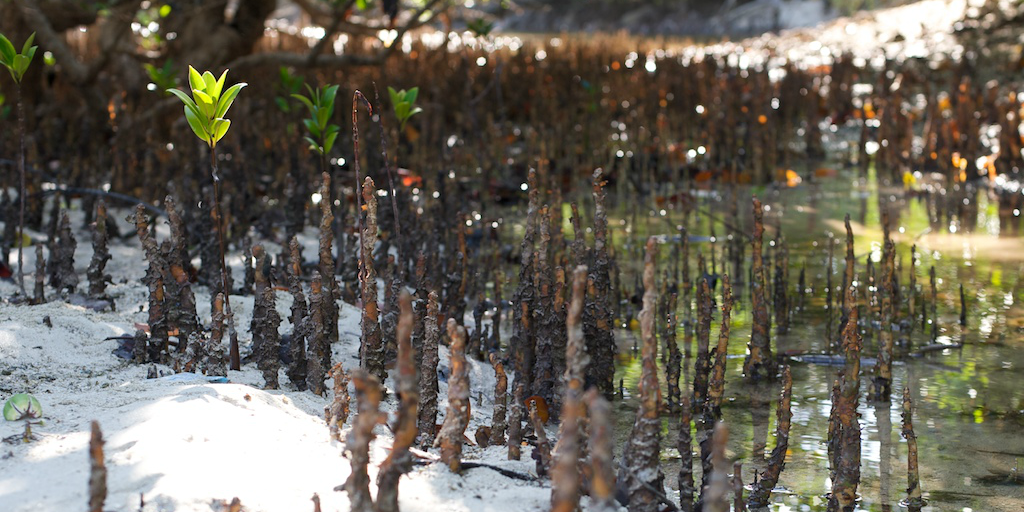
Original photo:Dennis Tang
To help solve the problem, carbon offsetting projects are giving coastal communities an additional incentive to conserve their mangrove forests.
In the fishing village of Gazi, Kenya, locals are planting mangrove trees and selling ‘carbon credits’ to fund sustainable development in the area. What’s more, fish populations have increased.
These working examples show there are smart solutions that are not just win-win for the communities involved, but also for the planet.
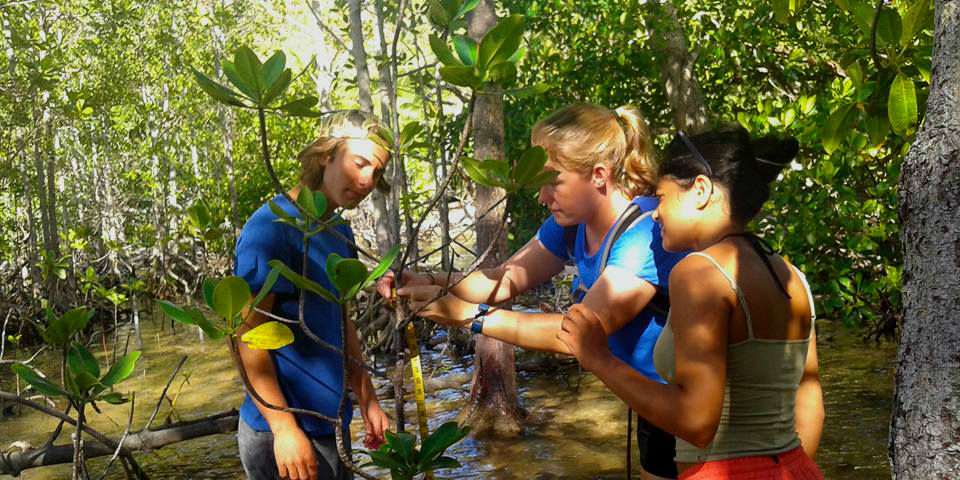
GVI participants measure growth as part of a mangrove survey.
Cancer remains the biggest cause of mortality for humans. Although chemotherapy is still the most effective way to treat most forms of the disease, it has many debilitating side effects.
A less arduous treatment has been sought after for years, and scientists have recently found a new contender from an unlikely source – mangrove plants.
Containing a rich source of anticancer products including steroid, triterpenoids, saponins, flavonoids, alkaloids and tannins, drugs made from mangrove plants have shown an impressive ability to fight lung cancer, in particular.
Scientists studying leaves from mangrove trees in India have found an ‘anti-cancer molecule’ that could be used to prevent or cure lung cancer, along with leukaemia and breast cancer.
Despite the exciting medicinal potential, it may be some years before these products are ready for patient use.
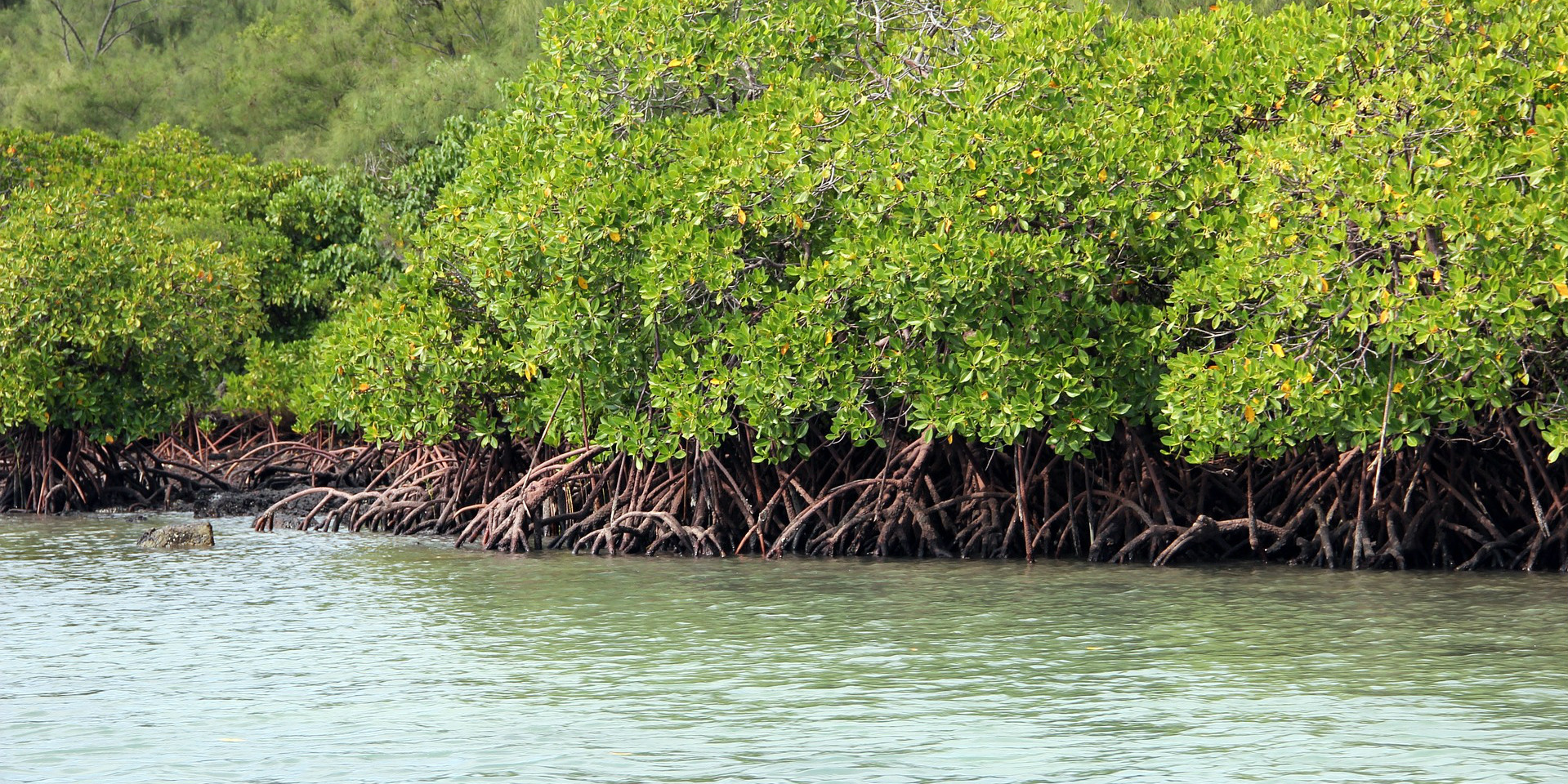
Original photo:somjuan
The tangled roots of mangrove trees reduce erosion by stabilising sediments that would otherwise be lost to the sea. By making the coastline less susceptible to washing away, the biodiversity of the area is maintained.
On top of that, valuable farmland is protected. Landowners are able to continue using their land, and fewer people are forced to move further inland.
In fact, sometimes these mangrove roots create shallow mudflats that extend the shoreline, creating land that was not there before.
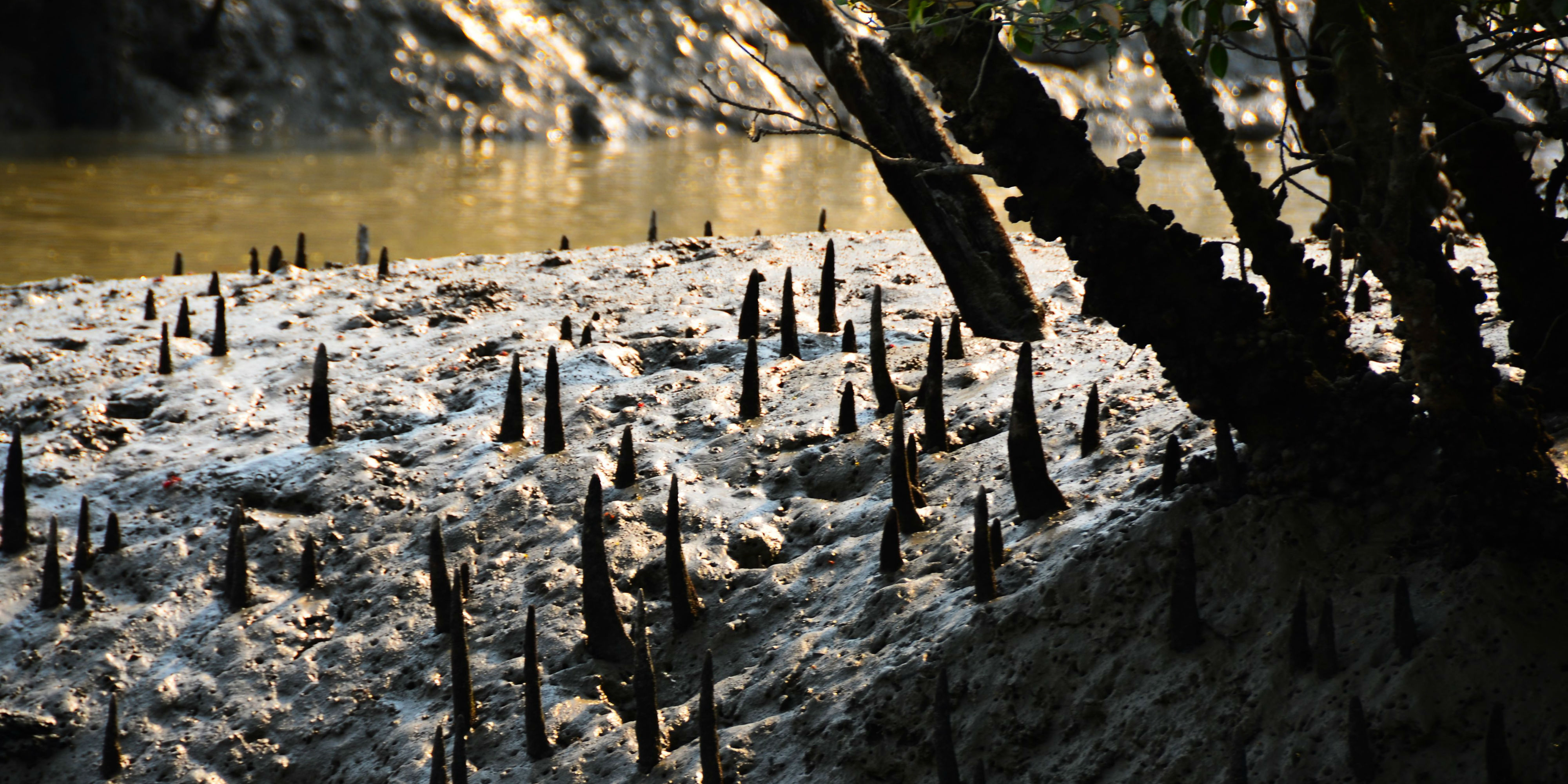
The aerating roots of mangroves allow them to grow out of oxygen-poor mudflats. Original photo: Girish Gopi
Erosion of land usually occurs through weathering, such as the constant force of waves breaking or as a result of large storms. The dense roots of the mangrove forest not only protects the coastline from the sea, but also the reverse: seagrass meadows and coral reef habitats are protected from the sediment from the shoreline. This is important since both these ecosystems are vital for many marine species, but are vulnerable to changes in external conditions.
Studying the coastline of Thailand, experts were able to deduce that coasts without mangroves suffered an increased rate of erosion, whereas shorelines that had mangroves were less affected.
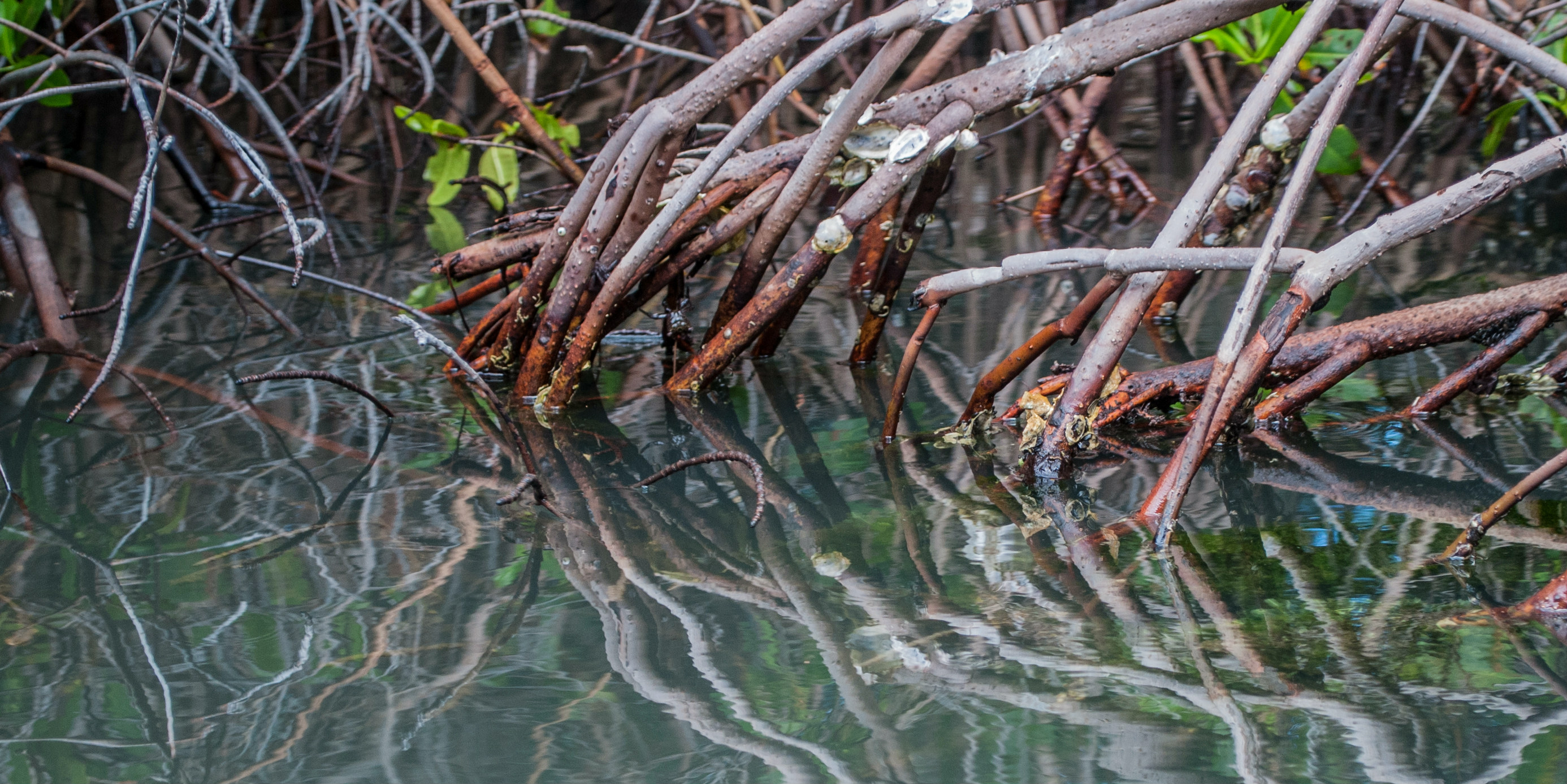
Original photo: The Photographer
Young fish are vulnerable to predators on the coral reef or in the deep sea. To sustain population numbers, many species take to the safety of the mangroves to spawn, where larger predators are unable to follow them.
Organic matter from the mangrove forest, such as leaves and detritus, form the base of important marine food chains. There is plenty of food in the mangroves for sheltering fish, making it the perfect nursery in which to grow.
Sharks also use mangroves as nurseries for their young. Lemon shark pups instinctively swim away from the mother and towards the mangroves after birth. Here, the juveniles must learn to hunt in order to avoid starvation.
Eventually, when the lemon shark is seven to eight years old, it will leave the safety of the mangroves and return to the open sea. Remarkably, female lemon sharks will return to the same mangrove they were born to have their own litters.
Learn how you can make a difference by participating in GVI’s lemon shark conservation project.
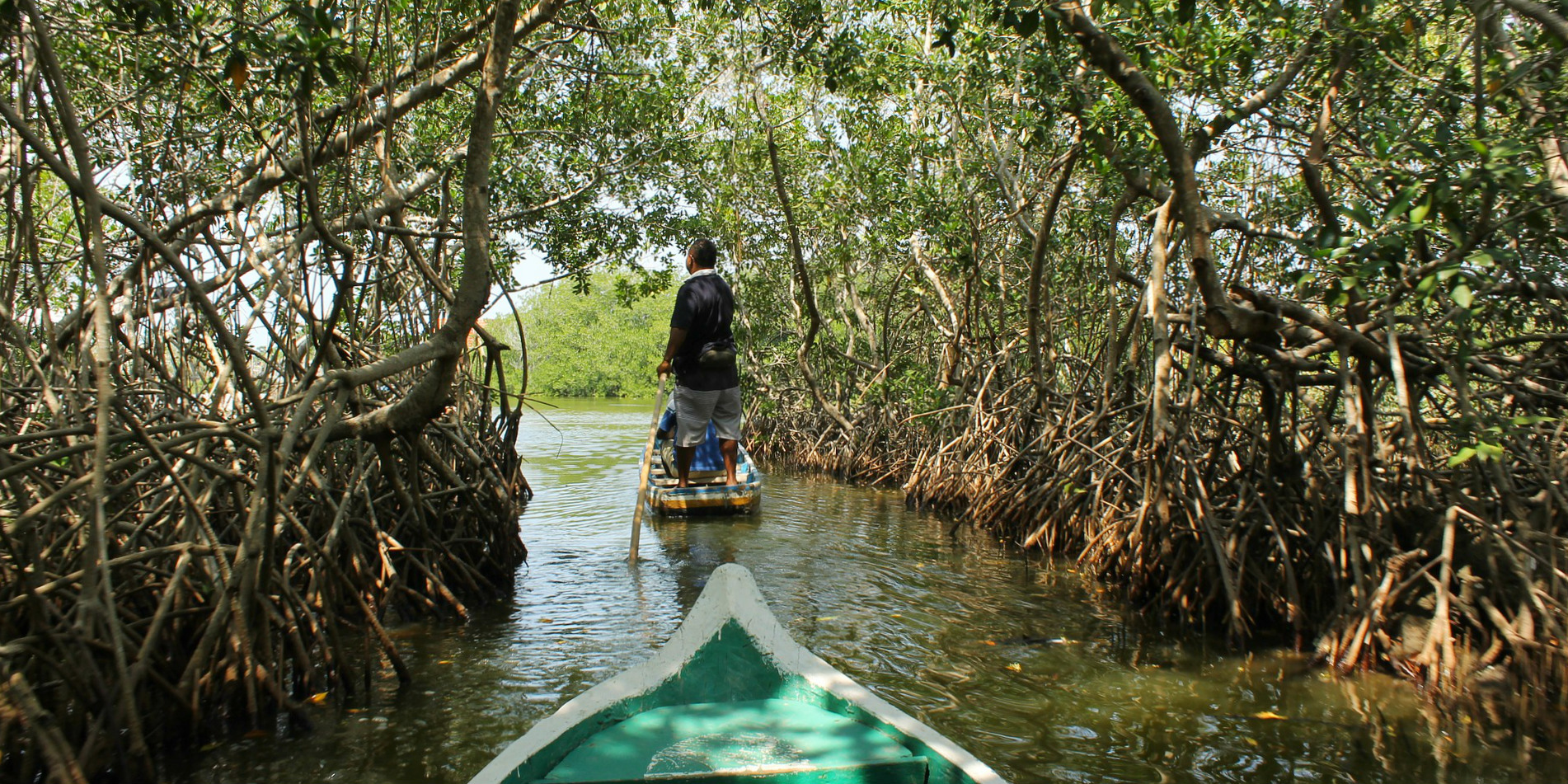
Along with absorbing excess carbon, mangrove forests remove pollution from the soil, including toxic heavy metal. Mangrove forests therefore purify the water that flows out to the ocean. Without this process, contaminated water would spill into the sea, affecting the food chains for marine life, which in return could poison humans through consumption.
Although shrimp aquaculture and oyster farms still pose the greatest threat to mangrove forests, Thai shrimp farmers have bucked this trend and have started to replant mangroves.
The shrimp farmers recognised that using chemical fertilisers, pesticides, disinfectants and antibiotics is not the best way to rear the largest yields of shrimp. Instead, a more natural solution is working better.
By reinstating mangroves and allowing them to flourish, important fish populations have been re-established and Thai farmers are reaping the rewards, without the need for expensive chemicals.
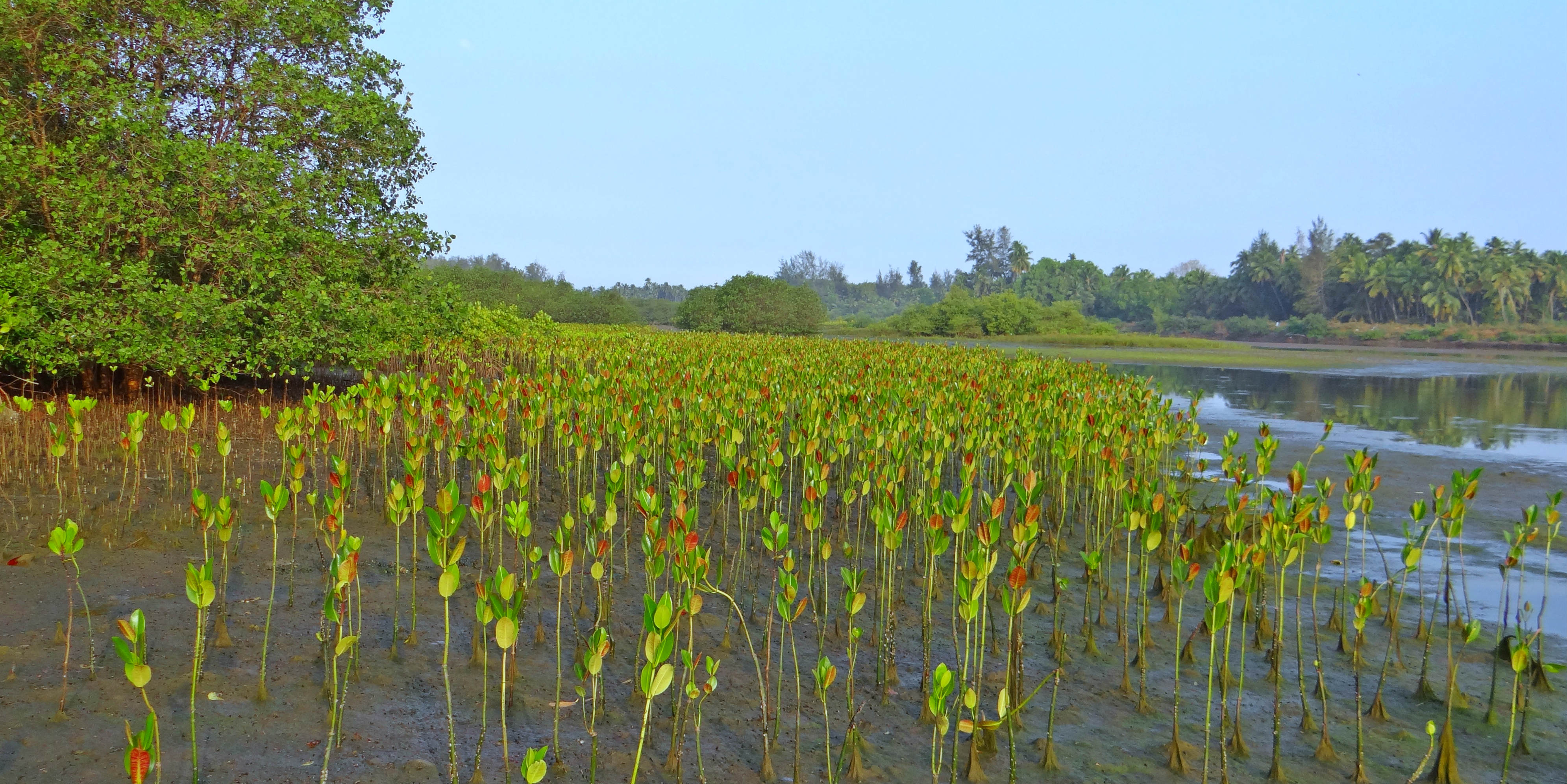
Mangrove seedlings in Karwar, India will one day help to bolster the river’s edge.
In the Virgin Islands, some coral reefs are even latching onto red mangrove tree roots. The shade created from the mangrove protects the coral reefs from bleaching, which is caused by solar radiation and warmer sea conditions.
In addition, the brackish water of the mangroves appears to reduce the acidity of the water. The result is that the structure of the coral reef is more stable, and growth is accelerated. Interestingly, tree-climbing fish, or mudskippers, are seen to be ‘bio-indicators’ for the health of mangrove habitats.
Mudskippers live on mudflats in mangroves and are sensitive to pollution, such as litter, runoff chemicals from the land or wastewater. If mudskipper populations are prolific, it means that there is less pollution in the mangrove as a whole.
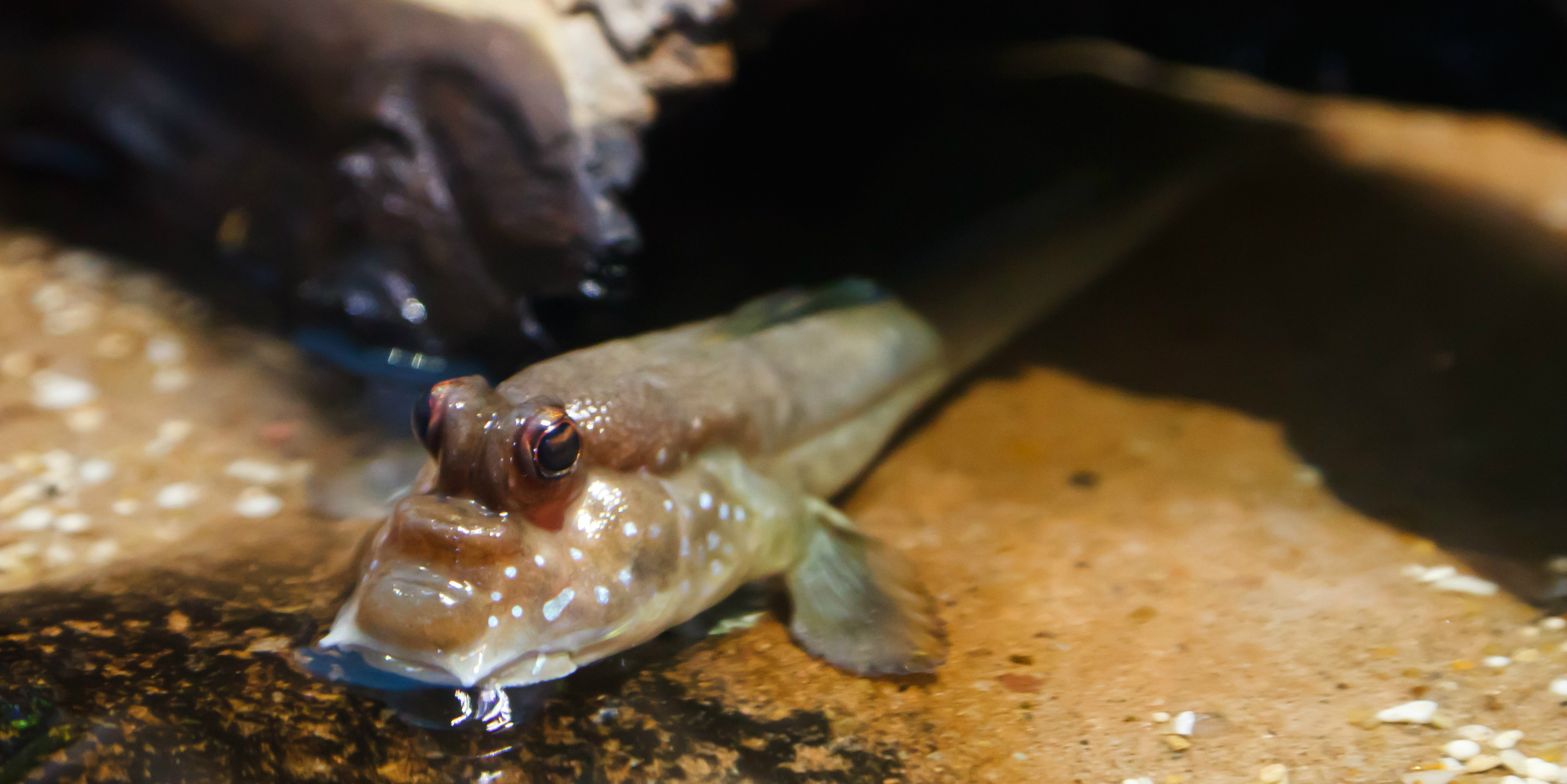
Tree-climbing fish, or mudskippers, live on mangrove mudflats.
With habitat loss and degradation of mangrove forests, the biodiversity of species continues to be threatened, including some of the quirkier animals:
Get involved in a marine conservation project to help protect mangrove forests, hawksbill turtles or lemon sharks. GVI has sustainable projects in Curieuse in the Seychelles, and Phang Nga in Thailand.
From the postcard-perfect Coral Bay to the hidden beauty of Secret Cove, these spots promise stunning photos and unforgettable views.
GVI
Posted: August 29, 2024